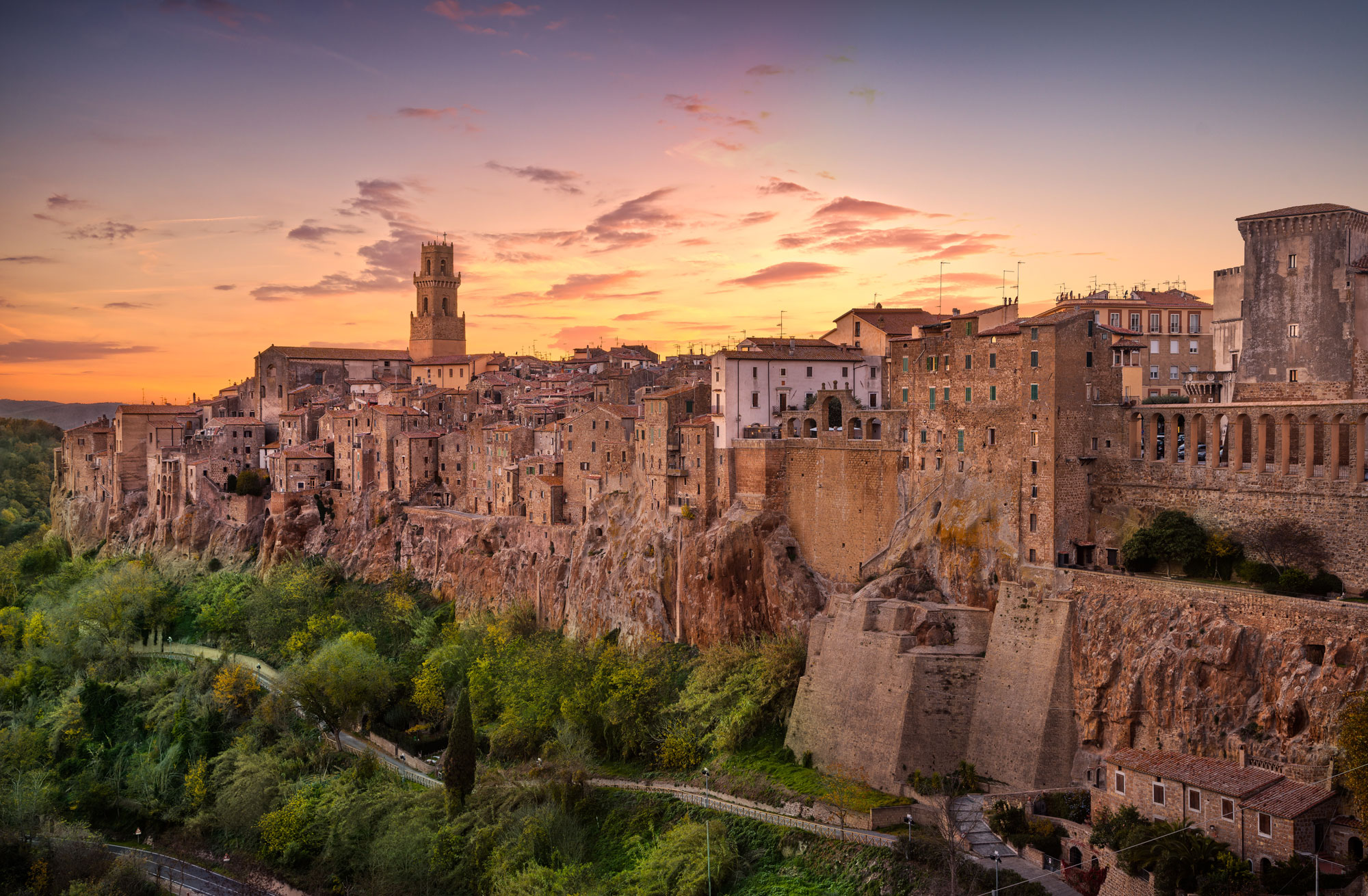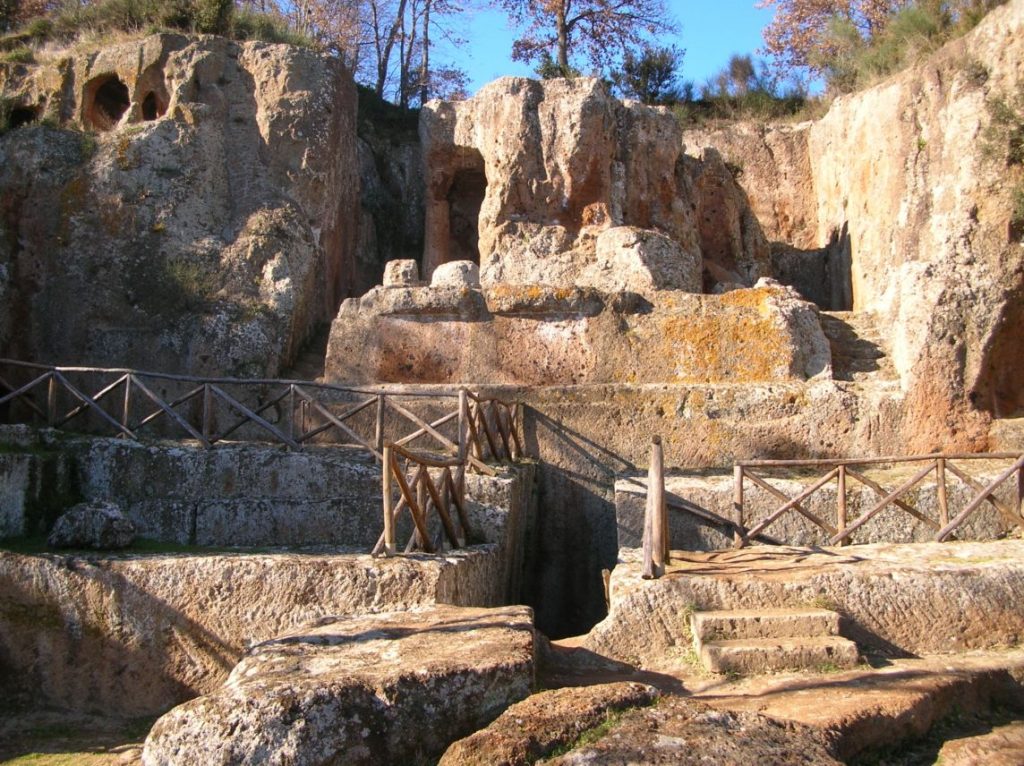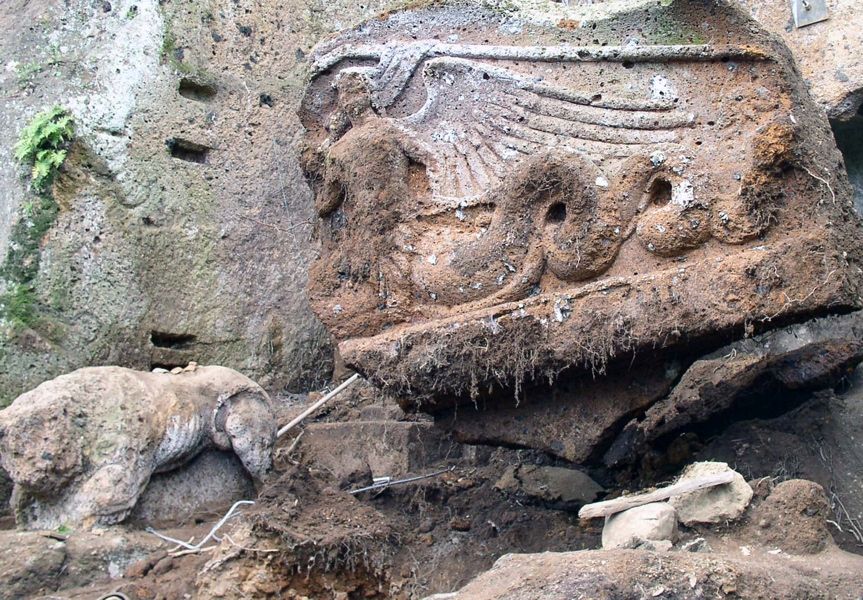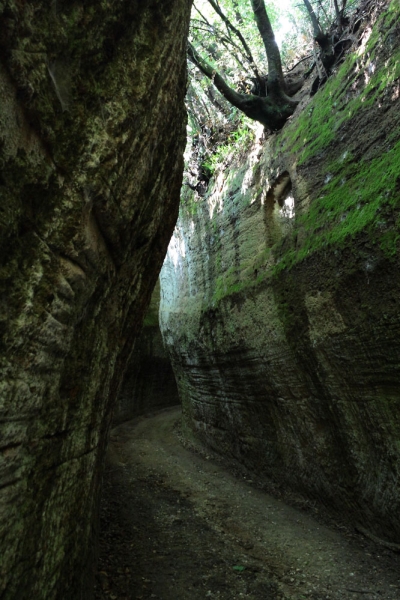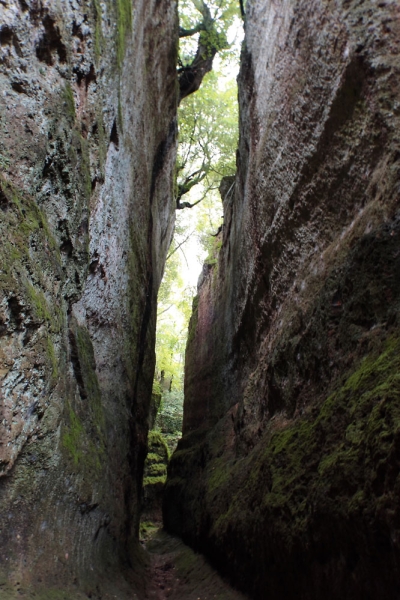Archaelogical Park “Città del Tufo” (Sorano)

The aim of the Park is to optimize the use of a series of sites of great archaeological, historical and naturalistic importance located in the territories of Sovana, Sorano and Vitozza (S. Quirico), in the so-called Tuff Area.
Although the most important evidence concerns the Etruscan period (with the Sovanese necropolises which are spread over the hills surrounding the village), the Park includes numerous and important remains from the late ancient and medieval periods such as castles, churches, fortifications and numerous rock dwellings.
The monumental area of the Archaeological Park is located in Sovana, on the hills north of the Calesine stream, where through suggestive paths through the thick Mediterranean scrub vegetation, you reach the necropolises with the tombs with colonnaded fronts (Pola tomb and Ildebranda tomb), those aedicula (of the Typhon, the Winged Demons and the Siren) and the dice, semidado and falsodado tombs.
The charm and charm of the place are also fueled by the presence of numerous Vie Cave. These narrow and winding paths allow you to easily overcome the difference in height between deep valleys and plateaus, immersing yourself in a unique and enchanting natural environment.
Of particular charm are the Via Cava di San Sebastiano (which has walls more than 20 meters high) and the Cavone (where the presence of numerous species of ferns, mosses and lichens that almost entirely cover its walls should be noted).
Then moving in the direction of Sorano you reach the rock settlement of San Rocco, so called due to the presence of a small church dedicated to the Saint, where you can visit numerous environments dug into the tuff: tombs, columbaria, rock dwellings. Here, immediately next to the church, a steep and winding hollow road leads into the underlying Lente river valley while from the hill you can enjoy a suggestive view of the village of Sorano.
Finally, the area of Vitozza, near San Quirico, deserves a special visit, one of the most important medieval rock settlements in Italy which developed on a tuff spur above the Lente valley. The town, which already existed in the 12th century, was definitively abandoned around the 15th century due to wars and depredations.
Along the main cart road you can admire the remains of fortifications, churches and also numerous caves (more than two hundred) which were used as stables, homes and workplaces. Everything is immersed in a natural environment of exceptional beauty.
Contacts
(+39) 0564614074
(+39) 0564633099
(+39) 0564633767
Address
Piazza Pretorio, Sovana GR
Le Vie Cave
Inside the Archaeological Park of “Città del Tufo”, the Vie Cave of Sorano and Sovana lead the visitor to discover an ancient Etruscan necropolis. Walking in the “cut”, between walls of tuff even more than twenty meters high, is an emotion that is hard to describe.
Walking through these streets – immersed in an evocative and uncontaminated natural environment, allows you to immerse yourself in a magical atmosphere, and to be in contact with the subsoil, with an “other” dimension.
In a landscape characterized by large plains of tuffaceous sandstone and carved by deep valleys, these steep paths, winding and deeply dug in the tuff, will allow you to save time while traveling through the towns, the cultivated countryside on the hills, the necropolis, and the other historical settlements.
Faced with the wonder that is felt along these imposing trenches that were built in ancient times, without the help of mechanical means, it is often necessary to make some clarifications in order to evaluate the actual work required to their realization from the right perspective: the tuff is a rock that, when it is still humid, is easily workable. Also, the current route level is much lower than the original (sometimes more than ten meters). For this reason, it was assumed that at the time of the first realization of the path, the trench dug through the tuff had to have a minimum depth, sufficient to easily overcome the difference in height between the sides, and that further excavations would have to be ascribed to the additional works of remaking – intended to regularize the erosion of the floor, consumed in particular by the hoofs of animals like mules, donkeys or horses.
Some Vie Cave are certainly attributable, in their original making, to the Etruscan road system: this is the case of the Via Cava of “Cavone”, in the necropolis of Sovana. The Etruscan layout of this important road to Mount Amiata is unequivocally attested by the numerous archaic chamber tombs that overlook it and, above all, by the Etruscan inscription “Vertna” indicating a noble family name that was identified on the left wall, at a depth of about 170 centimeters from today’s road surface.
Some other Vie Cave date back to the Middle Ages instead, or at least have been the subject of reconstruction in that period. In all the Vie Cave, there is a careful work of water management that is now almost completely compromised, due to the abandonment in which they have been left for a few decades now.
During the Christian period the particular depth of darkness that envelops these deep cuts in the rock, and the awe that emanated from them, favored the realization of numerous “Scacciadiavoli” (small niches with sacred images painted) with the aim of relieving and reassuring travelers. But the particular atmosphere that can be discovered in these paths has also made the continuation of ancient pagan rites possible, such as the one that, until the second post-war period, was held every year, on March 19th, in the Via Cava of San Giuseppe in Pitigliano: a night procession during which flaming bundles were carried through the roads.
The use of these paths as shortcuts has lasted until quite recent times, and, today, the Vie Cave continue to be traveled by hikers and visitors fascinated with their evocative dimension and unique natural environment. In this regard, we should not forget the importance of the Vie Cave from the ecological and environmental point of view. The particular conditions that developed in these paths determined a microclimate that has favored the growth of plants typical of humid and shady environments. Indeed, along the Vie Cave there are various types of ferns and, along the narrower paths, the steep walls appear almost entirely covered with mosses and lichens, which give an indirect greenish reflection to the shadier areas of the walls. A particularly frequent guest is then constituted by the ivy, wrapping the stems of the plants present at the edges of the walls which – sometimes falling inside the paths together with the characteristic lianas, enhance the beauty of the place.

